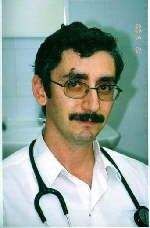Гелена Ариньш - Бойкот раку. Защитите себя и своих близких! Советы врача-онколога из Великобритании
122. Gao X, LaValley MP, Tucker KL. Prospective studies of dairy product and calcium intakes and prostate cancer risk: a meta-anlysis. J Natl Cancer Inst 2005; 97: 1768–77.
123. Hamalainen E, Adlercreutz H, Puska P, Pietinen P. Diet and serum sex hormones in healthy men. J Steroid Biochem 1984; 10: 459–64.
124. Hill P, Wynder EL, Garnes H, Walker A. Environmental factors, hormone status, and prostate cancer. Prev Med 1980; 9: 657–66.
125. Ganmaa D, Qin LQ, Wang PY, Tezuka H, Teramoto S, Sato A. A two-generation reproduction study to assess the effects of cows` milk on reproductive development in male and female rats. Fertil Steril 2004; 82: 1106–14.
126. Pollak MN, Schernhammer ES, Hankinson SE. Insulin-like growth factors and neoplasia. Nat Rev Cancer 2004; 4: 505–18.
127. Jerome L, Shiry L, Leyland-Jones B. Deregulation of the IGF axis in cancer: epidemiological evidence and potential therapeutic interventions. Endocr Relat Cancer 2003; 10: 561–78.
128. Yu H, Rohan T. Role of the insulin-like growth factor family in cancer development and progression. J Natl Cancer Inst 2000; 92: 1472–89.
129. Parodi PW. Dairy product consumption and the risk of breast cancer. Intl Dairy J 2009; 19: 551–65.
130. Hoppe C, Molgaard C, Michaelsen KF. Cow`s milk and linear growth in industrialized and developing countries. Annu Rev Nutr 2006; 26: 131–73.
131. Belitz H, Grosch W, Shieberle P 2004. Food chemistry. Berlin, Germany: Springer
132. Fuquay JW, Fox PF, 2011. Encyclopedia of dairy sciences. 2nd ed, vol 1. UK: Academic Press, p 3-60.
133. Slattery ML, Benson J, Berry TD, Duncan D, Edwards SL, Caan BJ, Potter JD. Dietary sugar and colon cancer. Cancer Epidemiolog Biomarkers Prev,1997; 6: 677–85.
134. Larsson SC, Bergkvist L, Wolk A. Consumption of sugar and sugar-sweetened foods and the risk of pancreatic cancer in a prospective study. Am J Clin Nutr 2006; 84:1171–6.
135. Prandini A, Tansini G, Sigolo S, Filippi L, Laporta M, Piva G. On the occurrence of aflatoxin M1 in milk and dairy products. Food Chem Toxicol 2009; 47: 984–91.
136. Turner P, Mendy M, Whittle H, Fortuin M, Hall M, Wild C. Hepatitis B infection and aflatoxin biomarker levels in Gambian children. Trop Med Intl Health 2000; 5: 837–41.
137. Rodriguez MA, Cabrera G, Godeas A. Cyclosporine A from a nonpathogenic Fusarium oxysporum suppressing Sclerotinia sclerotiorum. J Appl Microbiol 2006; 100: 575–586.
138. Pitt J, Wild CP, Baan RA et al. Improving Public Health through Mycotoxin Control 2012; Lyon: IARC (IARC Scientific Publications Series, N 158).
139. World Cancer Report 2014 (p.171).
140. M. Valko, C.J. Rhodes, J. Moncol, M. Izakovic, M. Mazur. Free radicals, metals and antioxidants in oxidative stress-induced cancer. Chemico-Biological Interactions 2006; vol 160, issue 1: pp 1–40.
141. G. Unden and J. Bongaert. Alternative respiratory pathways of Escherichia coli: energetics and transcriptional regulation in response to electron acceptors. Biochim et Biophys Acta 1997, 1320, 217–234.
142. Nimptsch K1, Rohrmann S, Kaaks R, Linseisen J. Dietary vitamin K intake in relation to cancer incidence and mortality: results from the Heidelberg cohort of the European Prospective Investigation into Cancer and Nutrition (EPIC-Heidelberg). Am J Clin Nutr.2010; 91(5): 1348–58.
143. Crew KD, Neugut AI. Epidemiology of gastric cancer. World J Gastroenterol 2006; 12: 354–362.
144. Forman D, Burley VJ. Gastric cancer: global pattern of the disease and an overview of environmental risk factors. Best Pract Res Gastroenterol 2006; 20: 633–649.
145. Tsugane S, Gey F, Ichinowatari Y, Miyajima Y, Ishibashi T, Matsushima S, Hirota Y, Inami T, Yamaguchi M, Karita K. Cross-sectional epidemiologic study for assessing cancer risks at the population level I. Study design and participation rate. J Epidemiol 1992; 2: 75–81.
146. Tsugane S, Gey F, Ichinowatari Y, Miyajima Y, Ishibashi T, Matsushima S, Hirota Y, Inami T, Yamaguchi M, Karita K. Cross-sectional epidemiologic study for assessing cancer risks at the population level II. Baseline data and correlation analysis. J Epidemiol 1992; 2: 83–89.
147. World Cancer Research Fund, American Institute for Cancer Research Food, Nutrition and Prevention of Cancer: a Global Perspective. Vol 67. Washington DC: American Institute for Cancer Research 1997.
148. Lee SA, Kang D, Shim KN, Choe JW, Hong WS, Choi H. Effect of diet and Helicobacter pylori infection to the risk of early gastric cancer. J Epidemiol 2003; 13: 162–168.
149. IARC. Biological agents. IARC Monogr Eval Carcinog Risks Hum 2012; 100B: 1–441.
150. Helicobacter and Cancer Collaborative Group. Gastric cancer and Helicobacter pylori: a combined analysis of 12 case control studies nested within prospective cohorts. Gut 2001; 49: 347–353.
151. Druesne-Pecollo N; Latino-Martel P; Norat T; Barrandon E; Bertrais S; Galan P; Hercberg S. Beta-carotene supplementation and cancer risk: a systematic review and metaanalysis of randomized controlled trials. International Journal of Cancer 2010; 127 (1): 172–84.
152. Shinya Toyokuni. Role of iron in carcinogenesis: Cancer as a ferrotoxic disease. Cancer Sci. 2009 Jan; 100(1): 9–16.
153. Wu T, Sempos C, Freudenheim J, Muti P, Smit L. Serum iron, copper and zinc concentrations and risk of cancer mortality in US adults. Ann Epidemiol 2004; 14: 195–201.
154. Toyokuni S. Iron-induced carcinogenesis: the role of redox regulation. Radic Biol Med 1996; 20: 553–66.
155. Zacharski L, Ornstein D, Woloshin S, Schwartz L. Association of age, sex, and race with body iron stores in adults: analysis of NHANES III data. Am Heart J 2000; 140: 98–104.
156. Zacharski L, Chow B, Howes P et al. Decreased cancer risk after iron reduction in patients with peripheral arterial disease: Results from a randomized trial. J Natl Cancer Inst 2008; 100: 996–1002.
157. Mark J Messina, Victoria Persky, Kenneth D.R. Setchell, Stephen Barnes. Soy intake and cancer risk: a review of the in vitro and in vivo data. Nutr Cancer 1994; 21: 113–131.
158. Saio K. Dietary pattern and soybean processing in Japan today. Trop Agric Res Serv 1984; 17: 153–161.
159. Setchell KDR, Borriello SP, Hulme P, Kirk DN, Axelson M. Nonsteroidal estrogens of dietary origin: possible roles in hormone-dependent disease. Am J Clin Nutr 1984; 40: 569–578.
160. Barnes S, Grubbs C, Setchell KDR, Carlson J. Soybeans inhibit mammary tumors in models of breast cancer. In Mutagens and Carcinogens in the Diet, MW Pariza, H-U Aeschbacher, JS Felton, S Sato. New York: Wiley-Liss 1990, pp 239–253.
161. Adlercreutz H. Western diet and western diseases: some hormonal and biochemical mechanisms and associations. Scand J Clin Lab Invest 1990; 50, suppl 201, 3–23.
162. Cross AJ, Sinha R. Meat-related mutagens/carcinogens in the etiology of colorectal cancer. Environmental and Molecular Mutagenesis 2004; 44(1): 44–55.
163. Jägerstad M, Skog K. Genotoxicity of heat-processed foods. Mutation Research 2005; 574(1–2): 156–172.
164. Sinha R, Rothman N, Mark SD, et al. Lower levels of urinary 2-amino-3,8-dimethylimidazo[4,5-f]-quinoxaline (MeIQx) in humans with higher CYP1A2 activity. Carcinogenesis 1995; 16(11): 2859–2861.
165. Moonen H, Engels L, Kleinjans J, Kok T. The CYP1A2-164A->C polymorphism (CYP1A2*1F) is associated with the risk for colorectal adenomas in humans. Cancer Letters 2005; 229(1): 25–31.
166. Butler LM, Duguay Y, Millikan RC, et al. Joint effects between UDP-glucuronosyltransferase 1A7 genotype and dietary carcinogen exposure on risk of colon cancer. Cancer Epidemiology, Biomarkers and Prevention 2005; 14(7): 1626–1632.
167. Knize MG, Felton JS. Formation and human risk of carcinogenic heterocyclic amines formed from natural precursors in meat. Nutrition Reviews 2005; 63(5): 158–165.
168. Woo HD1, Park S, Oh K, Kim HJ, Shin HR, Moon HK, Kim J. Diet and Cancer Risk in the Korean Population: A Meta– analysis. Asian Pac J Cancer Prev. 2014; 15(19):8509–19.
169. Sliva D, Jedinak A, Kawasaki J, Harvey K, Slivova V. Phellinus linteus suppresses growth, angiogenesis and invasive behaviour of breast cancer cells through the inhibition of AKT signalling. Br J Cancer 2008; 98: 1348–1356.
170. Suarez-Arroyo IJ, Rosario-Acevedo R, Aguilar-Perez A, Clemente PL, Cubano LA, et al. Anti-tumor effects of Ganoderma lucidum (Reishi) in inflammatory breast cancer in in vivo and in vitro models. Plos one 2013; 8: e57431.
171. Novaes MRCG, Valadares F, Reis MC, Gonçalves DR, Menezes MdC. The effects of dietary supplementation with Agaricales mushrooms and other medicinal fungi on breast cancer: evidence-based medicine. Clinics 2011; 66: 2133–2139.
172. Eliza WL, Fai CK, Chung LP. Efficacy of Yun Zhi (Coriolus versicolor) on survival in cancer patients: systematic review and meta-analysis. Recent Pat Inflamm Allergy Drug Discov 2012; 6: 78–87.
173. Bao PP, Lu W, Cui Y, Zheng Y, Gu K, et al. Ginseng and Ganoderma lucidum use after breast cancer diagnosis and quality of life: a report from the Shanghai Breast Cancer Survival Study. Plos one 2012; 7: e39343.
174. Jeong SC, Koyyalamudi SR, Jeong YT, Song CH, Pang G. Macrophage immunomodulating and antitumor activities of polysaccharides isolated from Agaricus bisporus white button mushrooms. J Med Food 2012; 15: 58–65.
175. Shi X, Zhao Y, Jiao Y, Shi T, Yang X. ROS-dependent mitochondria molecular mechanisms underlying antitumor activity of Pleurotus abalonus acidic polysaccharides in human breast cancer MCF-7 cells. Plos one 2013; 8: e64266.
176. Sarangi I, Ghosh D, Bhutia SK, Mallick SK, Maiti TK. Anti-tumor and immunomodulating effects of Pleurotus ostreatus mycelia-derived proteoglycans. Int Immunopharmacol 2006; 6: 1287–1297.
177. Zhou L-B, Chen B. Bioactivities of water-soluble polysaccharides from Jisongrong mushroom: anti-breast carcinoma cell and antioxidant potential. Int J Biol Macromol 2011; 48: 1–4.
178. Li J, Zou L, Chen W, Zhu B, Shen N, Ke J, Lou J, Song R, Zhong R, Miao X. Dietary mushroom intake may reduce the risk of breast cancer: evidence from a meta-analysis of observational studies. PLoS One. 2014 Apr 1; 9(4): e93437.
179. Schwartz B, Hadar Y. Possible mechanisms of action of mushroom-derived glucans on inflammatory bowel disease and associated cancer. Ann Transl Med 2014 Feb; 2(2): 19.
180. Park HJ. CARI III inhibits tumor growth in a melanoma-bearing mouse model through induction of G0/G1 cell cycle arrest. Molecules. 2014 Sep 12; 19(9): 14383–95.
181. Nazıroğlu M, Yıldız K, Tamtürk B, et al. Selenium and psoriasis. Biological Trace Element Research. 2012; 150: 13–39.
182. Nazıroğlu M. Role of selenium on calcium signaling and oxidative stress-induced molecular pathways in epilepsy. Neurochemical Research. 2009; 34(12): 2181–2191.
183. Nilsonne G, Sun X, Nyström C, et al. Selenite induces apoptosis in sarcomatoid malignant mesothelioma cells through oxidative stress. Free Radical Biology and Medicine. 2006; 41(6): 874–885.
184. Bayoummy KE. Cancer Principles and Practice of Oncology. Philadelphia, Pa, USA: JB Lippincott; 1991. (V. de Vita, S. Hellman, and S. A. Rosenberg, Eds.).
185. Nazıroğlu M, Karaoğlu A, Aksoy AO. Selenium and high dose vitamin E administration protects cisplatin-induced oxidative damage to renal, liver and lens tissues in rats. Toxicology. 2004;195(2–3): 221–230.
186. Zhu Z, Kimura M, Itokawa Y, Nakatsu S, Oda Y, Kikuchi H. Effect of selenium on malignant tumor cells of brain. Biological Trace Element Research. 1995; 49(1): 1–7.
187. Zhang J, Wang X, Xu TT. Elemental selenium at nano size (Nano-Se) as a potential chemopreventive agent with reduced risk of selenium toxicity: comparison with se-methylselenocysteine in mice. Toxicological Sciences. 2008; 101(1): 22–31.
188. Ji J, Liu J, Liu H, Wang Y. Effects of Fermented Mushroom of Cordyceps sinensis, Rich in Selenium, on Uterine Cervix Cancer. Evid Based Complement Alternat Med. 2014; 2014:173180.
189. Lee AH, Pasalich M, Su D, Tang L, Tran VD, Binns CW Mushroom intake and risk of epithelial ovarian cancer in southern Chinese women. Int J Gynecol Cancer. 2013 Oct; 23(8): 1400–5.
190. Prasad S, Tyagi AK, Aggarwal BB. Recent developments in delivery, bioavailability, absorption and metabolism of curcumin: the golden pigment from golden spice. Cancer Res Treat. 2014; 46: 2–18.
191. Shureiqi I, Baron JA. Curcumin chemoprevention: the long road to clinical translation. Cancer Prev Res (Phila). 2011; 4: 296–298.
192. Kunnumakkara AB, Anand P, Aggarwal BB. Curcumin inhibits proliferation, invasion, angiogenesis and metastasis of different cancers through interaction with multiple cell signaling proteins. Cancer Lett. 2008; 269: 199–225.


